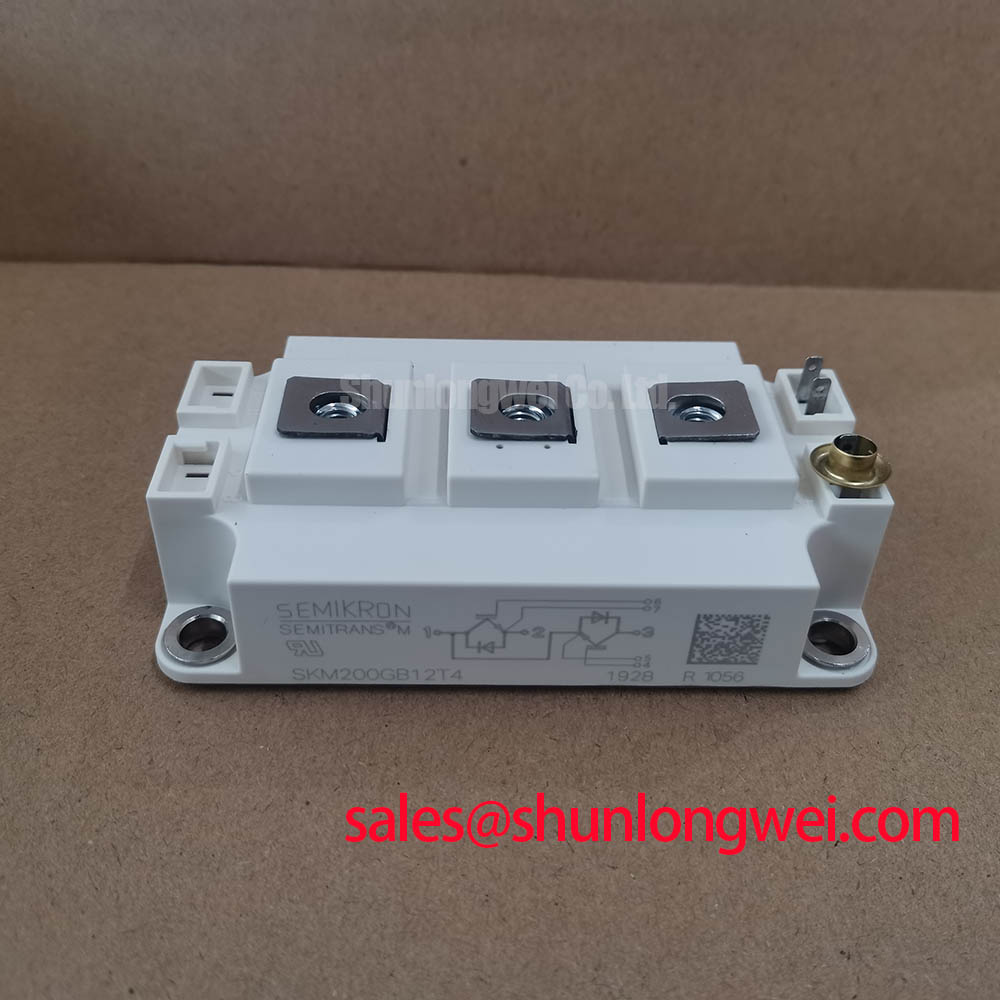Content last revised on October 4, 2025
SKT80/12C: Technical Review of a 1200V, 80A Stud Thyristor for Industrial Reliability
An Engineering-Grade Analysis of the Semikron SKT80/12C Thyristor
The Semikron SKT80/12C stud thyristor delivers exceptional thermal stability and mechanical robustness for high-reliability industrial power control applications. Featuring key specifications of 1200V | 80A (ITAV) | ITSM 2000A, this device provides superior heat dissipation and high fault current survivability. It offers a dependable solution for systems like AC motor soft starters, where both precise phase control and the ability to withstand significant inrush currents are critical design requirements. For controlled rectifier circuits demanding high fault tolerance, the SKT80/12C's 2000A surge rating makes it a definitive choice.
Application Scenarios & Value
Ensuring Operational Uptime in Industrial Power Control
The SKT80/12C is engineered for power conversion systems where reliability is not negotiable. Its robust construction makes it a primary component in applications such as industrial power supplies, battery chargers, and power control for heating and lighting systems. What is the primary benefit of its stud design? It ensures direct, low-resistance thermal transfer to the heatsink, a critical factor for long-term operational stability.
A high-fidelity engineering scenario for this thyristor is in an AC Motor Soft Starter. The primary challenge in this application is managing the massive inrush current during motor startup, which can be many times the nominal operating current. The SKT80/12C directly addresses this with its high surge current capability (ITSM) of 2000 A. This allows the device to safely handle transient loads without failure, preventing costly downtime and protecting downstream equipment. Its use in controlled Phase Control Rectifier bridges and demanding Welding Power Supply circuits further showcases its resilience. While the SKT80/12C is well-suited for these applications, for systems requiring significantly higher current handling, the related SKT240/12E offers a similar voltage rating with increased amperage capacity.
Key Parameter Overview
Decoding Thermal and Electrical Specs for Robust Design
The performance of the SKT80/12C is defined by its electrical and thermal characteristics. The following table highlights the key parameters derived from the official datasheet, which are essential for system design and thermal modeling.
| Parameter | Value | Conditions |
|---|---|---|
| Repetitive Peak Reverse Voltage (VRRM, VDRM) | 1200 V | - |
| Average On-State Current (ITAV) | 80 A | Tc = 85 °C |
| RMS On-State Current (ITRMS) | 125 A | Tc = 72 °C |
| Surge On-State Current (ITSM) | 2000 A | 10 ms, Tvj = 25 °C |
| Critical Rate of Rise of On-State Current (di/dt)cr | 150 A/µs | Tvj = 125 °C |
| Gate Trigger Current (IGT) | max. 150 mA | Tvj = 25 °C |
| Thermal Resistance, Junction to Case (Rth(j-c)) | 0.28 °C/W | DC |
| Operating Junction Temperature (Tvj) | -40 to +125 °C | - |
| Case Mounting Stud | G 33 (M12 x 1,5) | 15 Nm Mounting Torque |
Technical Deep Dive
Analyzing the Stud-Mount Design for Superior Thermal Performance
A critical, yet often overlooked, aspect of power semiconductor reliability is the efficiency of its thermal path. The SKT80/12C utilizes a stud-mount case (G 33 / M12), which is a key design choice for maximizing thermal performance and mechanical integrity. Unlike isolated baseplate modules that rely on multiple material layers and solder interfaces, the stud design creates a direct, high-pressure connection between the device case and the heatsink.
When the specified mounting torque (15 Nm) is applied, this pressure minimizes microscopic air gaps, significantly reducing the thermal interface resistance. This is analogous to how a high-performance CPU cooler must be clamped down firmly to its processor; any looseness creates an insulating barrier that traps heat. In the SKT80/12C, this direct metal-to-metal path results in a low junction-to-case Thermal Resistance (Rth(j-c)) of 0.28 °C/W. This efficiency in heat transfer is paramount for long-term reliability, as it reduces the peak temperature experienced by the silicon die under load and mitigates the damaging effects of thermal cycling.
FAQ
Practical Insights on SKT80/12C Implementation and Reliability
What is the significance of the 2000 A ITSM rating for my design?
The ITSM (Surge On-State Current) rating of 2000 A is a measure of the thyristor's robustness against short, high-current events. It means the device can survive a 10-millisecond surge of 2000 amps without failing. This provides a crucial safety margin in applications with high inrush currents, such as motor drives or capacitor banks, directly enhancing system fault tolerance and preventing catastrophic failure.
How does the stud-mount design affect heatsink selection and assembly?
The M12 stud requires a corresponding hole in the heatsink and proper surface preparation (flat, clean, with thermal grease) to achieve the specified thermal performance. A key advantage is the simplified mounting process using a nut and torque wrench. Applying the correct torque (15 Nm) is critical; undertorquing results in poor thermal contact, while overtorquing can damage the device's hermetic seal or stud threads. This design provides excellent, repeatable thermal performance when installed correctly.
What does the hermetic metal case with a glass insulator imply for reliability in harsh environments?
This construction provides a true hermetic seal, isolating the internal silicon element from the outside environment. Unlike plastic-encapsulated packages, it prevents moisture, dust, and corrosive gases from penetrating the device over its operational lifetime. This makes the SKT80/12C an ideal component for systems deployed in challenging industrial settings, such as chemical plants, marine applications, or outdoor enclosures, where long-term stability from a trusted manufacturer like Semikron is essential.
The continued relevance of robust, high-performance components like the SKT80/12C underscores a fundamental principle in modern industrial electronics: system uptime and long-term reliability are paramount. As automation and electrification advance, the value of components engineered to withstand both electrical and environmental stress becomes a strategic advantage, directly impacting the total cost of ownership and operational success.

















